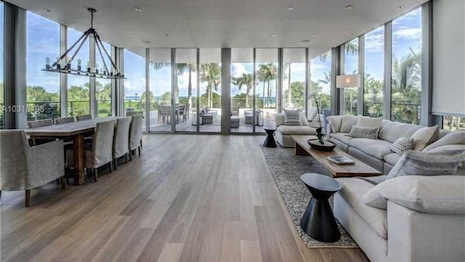 Home sales are increasing on the East Coast. Image credit: Redfin
Home sales are increasing on the East Coast. Image credit: Redfin
Expensive West Coast markets saw double-digit declines in home sales this March, despite home sales increasing a modest 2 percent year-over-year. According to a new report from Redfin, home sale prices fell by less than 1 percent in metro areas last month, marking the first year-over-year price drop in seven years. However, 24 metro areas still experienced double-digit jumps in home sales, while almost 40 metros saw home sales decline. “Homebuyers have backed off in West Coast metros where home prices have risen far out of their budgets,” said Daryl Fairweather, chief economist at Redfin, Seattle. “The opposite is happening in more affordable metros where buyers are eager to buy now to take advantage of low mortgage rates. “In California, where the tax burden is high, some people are finding they have to move out of state to afford to buy a home,” she said. “As a result, home sales are down in metros throughout the state.” Coast to coast East Coast cities saw the biggest gains in year-over-year home sales, but real estate is on average 2.5 times more expensive in the metro areas that witnessed the largest sale declines. The median home price in the 10 markets with the steepest sales drops is $624,000. Meanwhile the 10 markets with the biggest jumps in home sales had a median home price of less than a quarter of a million dollars, at $233,913. Year-over-year, home sales in San Francisco fell by 13.7 percent. The median home price in the area fell by 1 percent, to $1.4 million. Nearby San Jose, CA experienced a more dramatic fall in prices of 13 percent to a median sales price of $1,115,000. Sales dropped by 14.3 percent. San Jose also had the highest increase in inventory, with 104 percent more homes on the market than the previous March. Both San Jose and San Francisco remained competitive markets. Almost 50 percent of homes in San Jose and more than 60 percent of homes in San Francisco sold above listing price. Housing inventory moved the fastest in Denver, CO. Half of all homes there were pending sale within 15 days. The East Coast and Southeast saw several markets speed up, including New Orleans and Philadelphia, which saw listing time drop by a respective 64 and 29 days. In Florida, both the Orlando and Tampa metro areas saw home sales increase, 23.5 and 19.3 percent respectively. Miami also saw double-digit growth in home sales, at 14.5 percent, while Fort Lauderdale and West Palm Beach saw increases of less than 2 percent. Looking at luxury While real estate sales on the West Coast markets are slowing down as a whole, prices for luxury homes continue to grow. According to Redfin, the average sales price of luxury homes rose to an average of $1,772,000 to end 2018. Although the average sales price for luxury homes in the United States rose nearly 5 percent in the fourth quarter of 2018, the sales of homes priced at $2 million and above fell year-over-year. The state of Florida saw the biggest price gains as well as the steepest losses for the fourth quarter of 2018 (see story). According to Coldwell Banker’s State of Luxury 2019 report, both well-established and emerging luxury markets offer opportunities for affluents looking to invest in residential real estate. “Power markets” across the United States have several common denominators that make them attractive for luxury buyers. Leading luxury housing markets tend to be destinations in their own rights. Among the characteristics they share are airport accessibility, ease of doing business, presence of prestige brands and housing options that emphasize exclusivity, privacy and views (see story).
